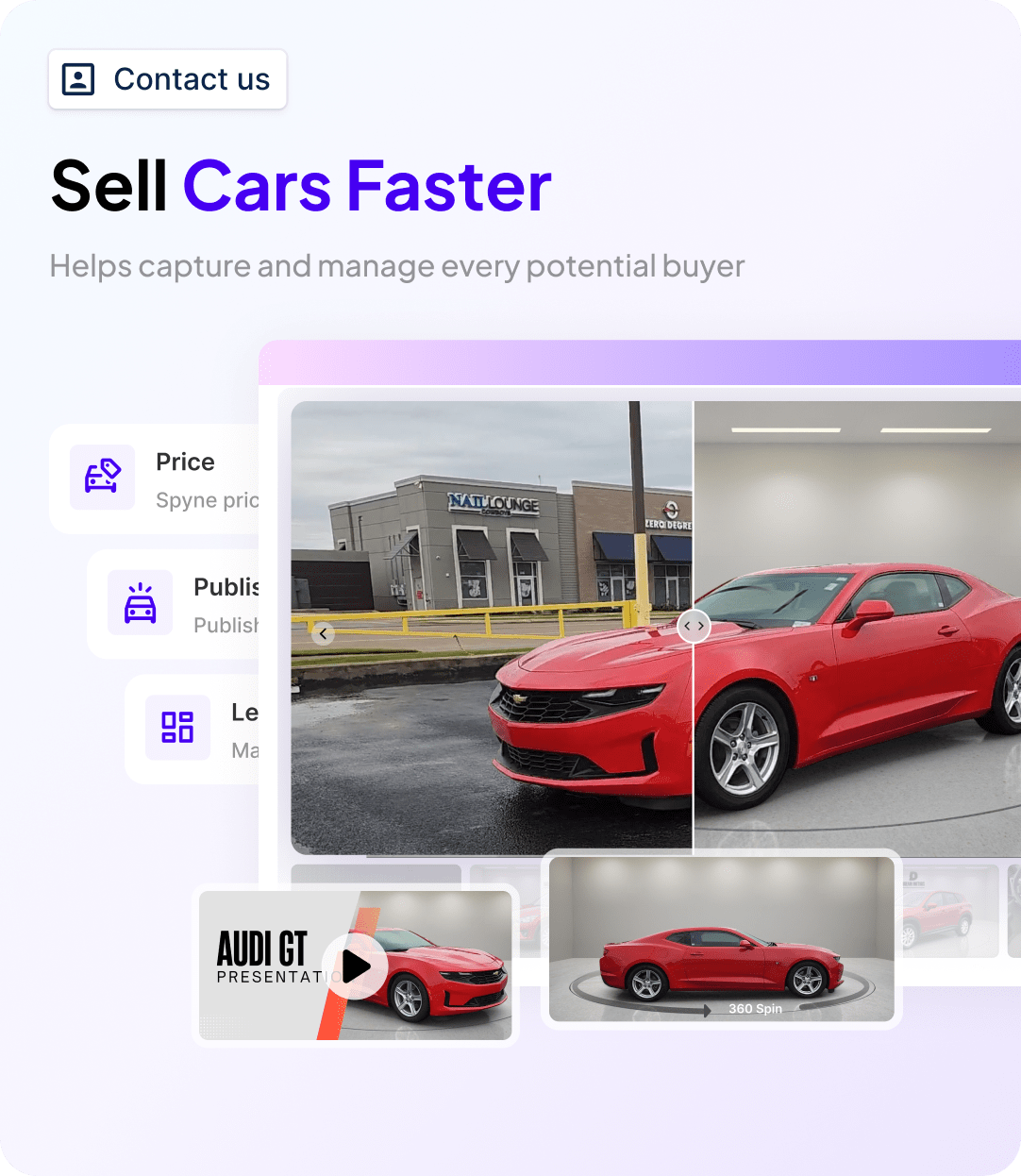Have you ever wondered how big automakers or OEMs group their cars to sell them faster? Well, the secret behind this is the car segments. This means grouping cars based on their size, design, and purpose. However, this was earlier, before the automotive industry shifted to digital. Now, buyers often start their buying journey online by visiting different sites, listings, and comparing cars, prices, and features. Therefore, car segmentation nowadays is not just limited to car size or purpose. It has become more data-driven, personalized, and visual, providing an immersive digital car-buying experience to customers.
In this blog, we will discuss the traditional car segment and the need for its digital shift. Together, you will explore how modern technologies are redefining the way vehicles are categorized, showcased, and sold in today’s automotive world. So, let’s delve into the blog ASAP!
Foundation of the Car Segment
A car segment is a classification system that groups vehicles based on their shared characteristics, such as interior space, design, body type, and performance. It was first introduced in Europe and later adopted globally, helping automakers and car dealerships bring structure to a fast-growing market. The main idea behind car segmentation was to make it easier for manufacturers to price, market, and create a fair competition for everyone. The idea was generally focused on OEMs, but it eventually helped buyers to compare car models, prices, and features more easily within the same segment that suits their lifestyle and needs.
For example, the Toyota Corolla and Honda Civic both come under the compact car segment. Which means both of these cars share similar dimensions, purpose, and price range. Therefore, the buyer can easily compare both cars’ prices and features, and further choose one based on their need and lifestyle.
Need For Digital Shift To The Car Segments
The way people buy cars has completely changed in the past few years. Now, instead of visiting dealerships or showrooms, people visit online listings and sites. They compare prices, features, and often make decisions based on visuals and digital experiences. While the traditional car segment was effective in its time, it has some limitations that make a digital shift necessary:
- Overlapping Categories: OEMs nowadays experiment with designs and features, creating vehicles that break the traditional boundaries. You can think of coupe-SUVs or crossover hatchbacks. This overlap confuses buyers in understanding under which segment these cars come, and makes the static segment less effective.
- Evolving Buyer Preferences: Indeed, the automotive industry is evolving, and so are the buyers and their preferences in buying a car. Buyers nowadays don’t just go after the engine size or body type. They care more about their lifestyle fit, technology, comfort, and aesthetics to make a wise buying decision.
- Lack of Visual Presentation: As buyers are moving towards digital listings, they often care about the visual presentation of cars. Whereas the traditional segmentation didn’t account for online presentation. Low-quality car images in listings can make it hard for buyers to compare vehicles and impact their overall purchase decision.
How AI Transformed The Car Segment?
Artificial intelligence is redefining the car segmentation, not just by grouping cars but also how they’re seen, sold, and experienced. From visualization to predictive analytics, AI has made segmentation dynamic, data-driven, and customer-focused. Let’s explore in brief how AI is transforming every aspect of this ecosystem:
- Visualization: Quality visuals are a strong component for OEMs and dealerships to sell their cars faster to modern buyers. AI-powered solutions allow dealerships and automakers to generate studio-quality car images. You don’t need to have photoshoots of your cars with professional photographers. With tools like Spyne’s AI Car Studio, you can turn basic car photos into consistent, high-quality visuals within seconds. This not only helps buyers see cars across segments but also creates a standardized digital catalog that makes browsing smoother and more engaging.
- AI-Based Classification and Tagging: The AI systems can now automatically identify the car make, model, body type, and condition from images and data. No manual work is required, and it avoids typo errors or misinformation. This will help you auto-classify vehicles into the correct segments and ensure accurate categorization across thousands of listings.
- Personalized Buyer Experience: AI-powered solutions bring personalization to the forefront of car segmentation. Instead of generic listings, these AI allow buyers to see recommendations based on their interests, budget, and browsing behavior. These tools will help you connect with your buyers more meaningfully and boost conversions.
- Dynamic Pricing & Valuation: AI doesn’t just organize cars, it understands the market value. By analyzing sales data, regional demand, and buyer interest, they suggest optimal pricing for each car segment. This kind of real-time valuation ensures competitive pricing, faster sales, and higher trust among buyers.
- AI in Predictive Market Analysis: Did you know that AI can now forecast emerging opportunities for you? Yes, you heard it right. AI systems can now analyze your previous sales data, buyers’ behaviour, and preferences. Based on this, they can forecast upcoming opportunities in the automotive industry and help you grow your business.
How Modern Car Segment Benefits OEMs & Dealerhips?
Many dealerships think that the car segment only benefits buyers. But that’s not true. It’s equally valuable for OEMs and car dealerships to streamline operations and maximize efficiency.
- Smarter Inventory Management: Whether you are an automaker or a car dealership, it helps you know which vehicle types are in demand. So that you can stock the right models in the right quantities and effectively manage your vehicle inventory. This will reduce overstock and ensure popular segments are always available for buyers.
- Targeted Marketing & Promotions: By knowing your buyers’ preferences, you can create campaigns tailored to specific segments. For example, highlighting compact SUVs to urban families or luxury sedans to premium buyers.
- Data-Driven Production Decisions for OEMs: If you are an automaker, you can easily track which segments perform best in different markets. Further, you will be able to adjust the production accordingly.
- Enhanced Online Presence: Utilizing AI-powered solutions like Spyne’s AI Car studio, you can provide your buyers with quality visuals and accurate segment classification. This makes your listing more appealing and easier to navigate, boosting engagement and increasing sales.
- Future-Proofing with Predictive Insights: The modern segmentation helps both car dealerships and OEMs to forecast demand. You can plan long-term strategies, ensuring they stay ahead in an evolving automotive market.
Evolution of the Car Segments in the Near Future
As the technology continues to evolve, the car segment in the near future will look vastly different from what we know today. Here’s what the future holds:
- AI + AR/VR Hybrid Car Exploration: Imagine exploring cars from your couch across segments using augmented and virtual reality, sounds manifesting right? In the near future, you can provide this experience to your buyers. AI and AR will combine to deliver immersive car experiences, where buyers can view, rotate, and even customize cars in real time before purchasing.
- Personalized Car Buying Journeys: The car segments will shift from “segment-based selling” to “experience-based buying”. It will focus on buyer intent, not just car type. AI will build custom recommendations for buyers based on their preferences and lifestyle. For example, if a buyer lives in a crowded city, the system might suggest compact EVs with high mileage. For long-distance commuters, it’ll recommend comfortable midsize sedans with better efficiency.
- Flexible Segment Definitions Based on Data and Design: As the traditional segment boundaries are fading, automakers now experiment with vehicles that combine multiple categories. With AI-driven data, these hybrid categories will evolve dynamically based on buyer trends, design language, and market performance.
In short, the future of car segments will not be fixed; it will be fluid, data-adaptive, and consumer-defined. Therefore, whether you are an automaker or a car dealership, utilizing all these AI-powered solutions will help you grow your automotive business in the near future.
Conclusion
Car segmentation has come a long way, from simple size-based categories to a dynamic, AI-driven ecosystem. Today, it’s not just about organizing cars, but it’s about understanding your buyer behaviour, showcasing your cars, and predicting demand.
As the auto industry accelerates toward AI-led personalization, visualization, and immersive retail, segmentation will continue to evolve beyond technical classifications. Further, it will become the foundation of digital auto retailing, helping every buyer find their perfect match. And with AI-powered platforms like Spyne, the journey to that future has already begun, where car segments are more about buyers’ intent and lifestyle, not just car size or type.



















